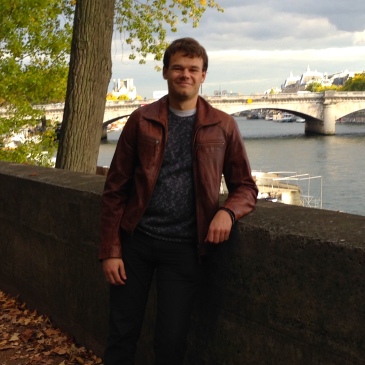
I am a biologist with a deep interest in early plant evolution. My team and I use comparative functional genomics, whole genome sequencing, molecular biological tools, and evolutionary bioinformatics.
Short CV:
Academic Appointments
Since January 2022 | University Professor, tenured | University of Göttingen, Germany
Institute for Microbiology and Genetics
Head of the Department of Applied Bioinformatics
September 2019 – December 2021 | Junior Professor, tenure track | University of Göttingen, Germany
Institute for Microbiology and Genetics
Head of the Department of Applied Bioinformatics
April 2019 – August 2019 | Postdoctoral Fellow | TU Braunschweig, Germany
Supported by a DFG Return Grant from April 2019 – September 2019
Host: Prof. Dr. Michael Steinert, Institute of Microbiology
September 2016 – March 2019 | Postdoctoral Fellow | Dalhousie University, NS, Canada
Supported by a DFG Research Fellowship from Dec 2016 – Nov 2018
Supervisor: John Archibald, Biochemistry and Molecular Biology
Education
2013 – 2016 | Heinrich-Heine-Universität Düsseldorf, Germany
Doctor of Natural Sciences
PhD Thesis: Of robust kleptoplasts and versatile embryoplasts
Supervisors: Sven Gould & Bill Martin, Molecular Evolution
2011 – 2013 | Uppsala University, Sweden
Master of Science in Biology
Master’s thesis: Influence of abscisic acid on root vascular development
Supervisor: Annelie Carlsbecker, Physiological Botany, Uppsala University
2008 – 2011 | Technische Universität Carolo Wilhelmina zu Braunschweig, Germany
Bachelor of Science in Biology
Bachelor’s thesis: Studies on virulence and inhibition of Chalara fraxinea
Supervisor: Barbara Schulz, Institute of Microbiology
How did that happen?
When I started my Bachelor’s studies at the Technical University of Braunschweig I had the goal in mind to become a microbiologist. At some point during a lecture given by Michael Wettern it hit me that I had fallen in love with plants. From that point on, I enrolled in as many botanical courses as possible and soon learned I found all aspects of botany, including mycology and phycology, equally fascinating. For my Bachelor’s project, I hence decided to not do “just” plants, but plant-microbe interaction. I commenced my bachelor’s thesis in the lab of Barbara Schulz (Microbiology, TU Braunschweig), studying Hymenoscyphus fraxineus, the causal agent of ash dieback.
With the clear goal in mind to further delve into plant science, I enrolled at Uppsala University to do my Master’s in Genetic and Molecular Plant Science. There, I met Annelie Carlsbecker (Physiological Botany, Linnean Centre for Plant Science), who studied vascular development in Arabidopsis roots. Having always been fascinated by plant tissue formation and already worked on the symbiotic-flavored side of plant sciences during my Bachelor’s, I wanted to have a closer look into plant development. I approached Annelie and we eventually started discussing possible projects for a Master’s thesis in her lab. Together, we started a project to explore the influence of abscisic acid on root vascular development. While working at Uppsala Biocenter, I learned that many people did something they called “plant-evo-devo” (especially thanks to Peter Engström, who gave brilliant lectures on the subject). That caught my attention. I started to dig into the plant evolutionary literature and found my favorite branch of botany: plant evolution.
Looking for a lab with a strong background in plant evolution, I applied for a position in Bill Martin’s lab at Düsseldorf University. Bill generously invited me and said that he direly needs a student taking up the project on the plastid stealing slugs. Slugs housing plastids for months… How could plastids survive in an animal cell?* As a plant biologist, I was intrigued. I joined the lab and did my PhD under the supervision of Sven Gould. Delving into the subject we soon realized that the answer to that question was to be found with the plastid and not with the slugs. Instead, there were many molecular factors that set algal plastids clearly apart from the canonical land plant plastid. This ultimately brought me back to my initial question: how did these plant characters evolve? I figured that the best way to answer this question is to look at the algal relatives to land plants: the streptophyte algae.
*see “Research” for more details